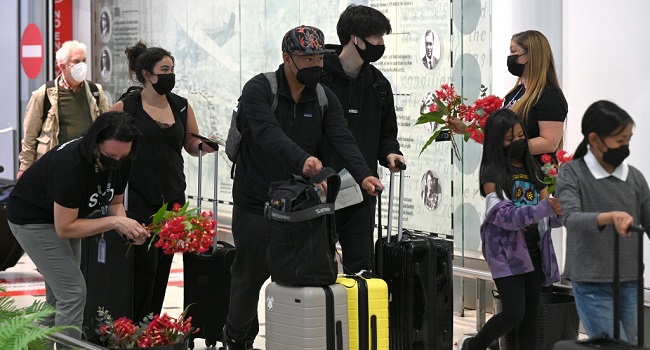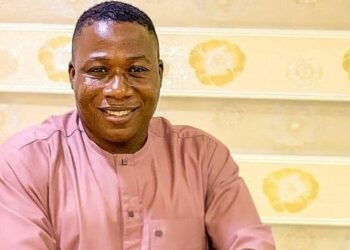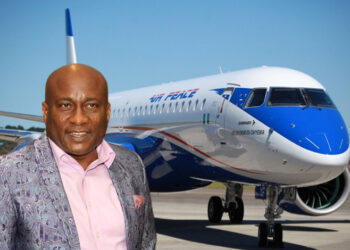Jubilant visitors returned to Australia Monday as the country reopened its borders to vaccinated tourists, nearly two years after the island nation imposed some of the world’s strictest Covid-19 travel restrictions.
At the country’s two major international airports in Sydney and Melbourne, tired but elated family and friends rushed from gates to embrace loved ones after years apart.
Bernie Edmonds was emotional as he hugged his eight-year-old granddaughter, Charlotte, who had just landed in Sydney.
“It’s great to have her back,” he said. “She’s got to go again but we’ll get her back again.”
The country closed its borders to almost everyone except citizens and permanent residents in March 2020, trying to slow surging Covid-19 case numbers.
The travel ban — which also barred citizens from going overseas without an exemption and imposed a strict cap on international arrivals — earned the country the nickname “Fortress Australia”.
Sydneysider Jody Tuchin was excited to pick up her best friend, who she had not seen since 2018.
“He made it back just in time for my wedding in four days,” she told AFP.
Meanwhile, Qantas pilot Paul Grant said it was “nice to have passengers back on again”.
A Qantas flight from Los Angeles was the first to touch down in Sydney at 6:20 am (1920 GMT) followed by arrivals from Tokyo, Vancouver and Singapore.
“It’s fair to say we’ve all been waiting a long time to welcome visitors back to Australia,” Qantas chief executive Alan Joyce said.
The national carrier expects to bring more than 14,000 passengers into Australia this week — the start of what many believe will be a long, slow recovery for a tourism sector devastated by the pandemic.
“I think we’re going to see a very, very strong rebound,” Tourism Minister Dan Tehan said at Sydney airport, wearing a t-shirt with the words: “Welcome Back”.
Attracting tourists from China, previously Australia’s biggest market, would be difficult while Beijing enforces a zero-Covid policy, Tehan admitted.
“But as soon as that changes, Tourism Australia have been doing a lot of work to make sure that we will be ready to encourage those Chinese visitors to come.”
The Australian government has launched a AUS$40 million ($28.7 million) advertising campaign to lure tourists back, but only 56 international flights are scheduled to land in the country in the 24 hours after the re-opening — far below pre-pandemic levels.
Prime Minister Scott Morrison said he had “no doubt” traveller numbers will scale up in time.
– ‘Fortress Australia’ –
Every month under “Fortress Australia” has cost businesses an estimated AUS$3.6 billion, according to the Australian Chamber of Commerce and Industry, with tourism particularly hard hit.
Tony Walker, managing director of Quicksilver Group, which operates cruises, diving excursions and resorts across the Great Barrier Reef, told AFP he was “very excited about being able to re-open”.
International tourists “make up around 70 percent” of business for tourism operators on the reef, Walker said, making the two-year border closure “incredibly difficult”.
During the pandemic, his company had to reduce its employees from 650 to the 300 it has today.
Key to Australia’s reopening is a government requirement that all overseas travellers must be fully vaccinated.
At Sydney Airport, American tourist Robert Landis said this had not dissuaded him from visiting.
“I’ve just been looking for any opportunity to get down here,” he said.
However, the Australian Tourism Export Council warned this week that “there are worrying signs consumers are wary of travelling” to Australia, with “confusion over our various state travel restrictions and concern about snap border closures” a key issue.
– No west just yet –
Western Australia will not re-open to international travellers on Monday, holding off until March 3.
Until recently, the state had pursued a strict Covid-zero policy, cutting itself off from the rest of the country.
The decision sparked lawsuits — and the observation that it was easier for Australians to travel to Paris than Perth — but proved popular with West Australians.






















